Active Distribution Network Source–Network–Load–Storage Collaborative Interaction Considering Multiple Flexible and Controllable Resources
Abstract
:1. Introduction
2. ADN Architecture
3. Distribution Network Model Considering the Interaction of Multiple Flexible and Controllable Resources
3.1. Reactive Power Interaction Model Under Distributed Photovoltaic Power Generation Grid-Connections
3.2. Demand-Side Energy Storage Model for Distribution Networks
3.3. Flexible Load Model Under Incentive-Based Demand Response
3.3.1. Interruptible Loads, IL
3.3.2. Curtailable Loads, CL
3.3.3. Shiftable Loads, SL
4. Static Voltage Stability Index Under Active Distribution Network
4.1. Static Voltage Stability
4.2. Static Voltage Stability Index
5. Reactive Power Optimization Model
5.1. Optimization Variables
5.2. Optimization Objectives
5.3. Constraint Condition
6. Case Studies and Analysis
7. Conclusions
- (1)
- Simulation data shows that by coordinating distributed photovoltaics, energy storage, and multiple flexible loads to output each other, the voltage stability index of the network has been reduced by 9.7641% in comparison to the pre-optimization state, effectively improving the static voltage stability and voltage stability margin of network.
- (2)
- Intraday network loss of ADN has been reduced to 86.4281% of the original, and the overall voltage deviation has also been reduced to 46.7207% before optimization, effectively reducing operating costs and greatly avoiding the possibility of the voltage surpassing the threshold.
- (3)
- In the reactive power optimization model for ADNs incorporating collaborative interaction among sources, networks, loads, and storage, the voltage regulation capability is significantly enhanced through the classification of various types of flexible loads. This approach not only improves the network’s adaptability to intermittent fluctuations in renewable energy generation but also strengthens its overall responsiveness and operational efficiency.
Author Contributions
Funding
Data Availability Statement
Conflicts of Interest
References
- Cui, Y.; An, N.; Fu, X.; Zhao, Y.; Zhong, W. Low-carbon economic dispatching of power system considering joint peak shaving of generalized energy storage and carbon capture equipment. Electr. Power Automat. Equip. 2023, 43, 40–48. [Google Scholar]
- Li, H.; Zhang, X.; Li, F.; Zhang, H.; Li, N.; Ma, X. Qinghai energy demand forecasting and development strategy research under the background of construction of clean energy demonstration province. Electr. Power. 2021, 54, 1–10+26. [Google Scholar]
- Yuan, J.H.; Zhang, H.N.; Zhang, J. Actively promoting power structure adjustment and accelerating the construction of a new power system. China Electr. Power Enterp. Manag. 2024, 13, 29–32. (In Chinese) [Google Scholar]
- Hou, H.; Chen, Y.; Liu, P.; Xie, C.; Huang, L.; Zhang, R. Multisource Energy Storage System Optimal Dispatch Among Electricity Hydrogen and Heat Networks From the Energy Storage Operator Prospect. IEEE Trans. Ind. Appl. 2022, 58, 2825–2835. [Google Scholar] [CrossRef]
- Wang, J.; Zhou, B.; Wang, T.; Lu, S. Design and implementation of decision support software for power grid planning with high proportion of renewable energy. Guangdong Electr. Power. 2021, 34, 50–59. [Google Scholar]
- Ai, H.; Wang, H. Distributionally robust optimization of load recovery for a multi-infeed HVDC receiving-end systems. Power Syst. Prot. Control. 2022, 50, 24–33. [Google Scholar]
- Zeng, G.; Ye, R.; Liu, W.; Huang, Y.; Li, J. The collaborative optimal dispatching of the medium voltage DC distribution network based on power flow calculation. Power Syst. Clean Energy. 2024, 40, 98–104. [Google Scholar]
- Wu, W.; Lin, C.; Sun, H.; Wang, B.; Liu, H.; Wu, G.; Li, P.; Sun, S.; Lu, J. Machine learning based energy management and operation control for active distribution networks. Autom. Electr. Power Syst. 2024, 48, 2–11. [Google Scholar]
- Zhou, L.; Zhou, Y.; Shen, W.; Huang, Z.; Li, L.; Li, Y. Reactive voltage optimization control of novel power system based on deep reinforcement learning. Electr. Meas. Instrum. 2024, 61, 182–189. [Google Scholar]
- Ai, Y.; Du, M.; Pan, Z.; Li, G. The optimization of reactive power for distribution network with PV generation based on NSGA-III. CPSS Trans. Power Electron. Appl. 2021, 6, 193–200. [Google Scholar] [CrossRef]
- Ren, Y.; Song, J.; Yu, R.; Wang, W.; Xing, B.; Wu, J. Coordinated optimization of reactive power compensation device in distribution network considering on demand-side response. Smart Power. 2024, 52, 79–86. [Google Scholar]
- Chen, Q.; Wang, W.; Wang, H.; Wu, J. Research on dynamic reactive power compensation optimization strategy of distribution network with distributed generation. Acta Energ. Sol. Sin. 2023, 44, 525–535. [Google Scholar]
- Sun, R.; Yuan, Z.; Wang, W.; He, S. Multi-objective optimization of dynamic reactive power in a new distribution network with a solid state transformer. Power Syst. Prot. Control. 2023, 51, 104–114. [Google Scholar]
- Qiao, L.; Wang, T.; Liu, J.; Li, X.; Wu, C. Distribution network reactive power optimization considering generation network load storage interaction. Electr. Meas. Instrum. 2024, 61, 146–151+189. [Google Scholar]
- Liu, Y.; Huang, M.; Zhang, Y.; Zhang, L.; Liu, W.; Yu, H.; Wang, F.; Li, L. Coordinated Optimization Method of Electric Buses and Voltage Source Converters for Improving the Absorption Capacity of New Energy Sources and Loads in Distribution Networks. Energies 2025, 18, 832. [Google Scholar] [CrossRef]
- Chen, Y.; Ma, X.; Cheng, K.; Bao, T.; Chen, Y.; Zhou, C. Ultra-short-term power forecast of new energy based on meteorological feature selection and SVM model parameter optimization. Acta Energ. Sol. Sin. 2023, 44, 568–576. [Google Scholar]
- Phan, T.M.; Duong, M.P.; Doan, A.T.; Duong, M.Q.; Nguyen, T.T. Optimal Design and Operation of Wind Turbines in Radial Distribution Power Grids for Power Loss Minimization. Appl. Sci. 2024, 14, 1462. [Google Scholar] [CrossRef]
- Ma, X.; Li, Y.; Liang, C.; Dong, X.; Xu, R. Reactive power optimization for loss reduction of distribution network considering interactions of high penetration level of multiple regulating energy resources. Electr. Power 2024, 57, 123–132. [Google Scholar]
- Zhang, Y.; Chen, J.; Guo, L.; Shen, J.; Zhai, W.; Dong, H.; Zhang, J.; Fang, R. Research on dynamic reactive power optimization method of active distribution network considering flexible and controllable resources. Electr. Automat. 2023, 45, 30–33. [Google Scholar]
- Lei, C.; Bu, S.; Chen, Q.; Wang, Q.; Wang, Q.; Srinivasan, D. Decentralized Optimal Power Flow for Multi-Agent Active Distribution Networks: A Differentially Private Consensus ADMM Algorithm. IEEE Trans. Smart Grid. 2024, 15, 6175–6178. [Google Scholar] [CrossRef]
- Zhang, X.; Xu, Y.; Xu, S.; Xiao, X. Fundamental Approximation Model and Frequency Characteristics of CPS-PWM with Asymmetric Regular Sampling. Autom. Electr. Power Syst. 2020, 44, 91–97. [Google Scholar]
- Mitra, S.K.; Karanki, S.B. An SOC Based Adaptive Energy Management System for Hybrid Energy Storage System Integration to DC Grid. IEEE Trans. Ind. Appl. 2023, 59, 1152–1161. [Google Scholar] [CrossRef]
- Xiao, Y.; Xiao, X.; Jin, X.; He, X.; Feng, J.; He, X. Multi-objective optimization of distribution network system with energy storage and distributed photovoltaic considering static voltage stability. Guangdong Electr. Power 2024, 37, 24–32. [Google Scholar]
- Dehghani, M.; Bornapour, S.M.; Sheybani, E. Enhanced Energy Management System in Smart Homes Considering Economic, Technical, and Environmental Aspects: A Novel Modification-Based Grey Wolf Optimizer. Energies 2025, 18, 1071. [Google Scholar] [CrossRef]
- Wang, G.; Xin, H.; Wu, D.; Li, Z.; Ju, P. Grid Strength Assessment for Inhomogeneous Multi-infeed HVDC Systems via Generalized Short Circuit Ratio. J. Mod. Power Syst. Clean Energy 2023, 11, 1370–1374. [Google Scholar] [CrossRef]
- Xu, J.; Lan, T.; Liao, S.; Sun, Y.; Ke, D.; Li, X. An on-line power/voltage stability index for multi-infeed HVDC systems. J. Mod. Power Syst. Clean Energy 2019, 7, 1094–1104. [Google Scholar] [CrossRef]
- Makasa, K.J.; Venayagamoorthy, G.K. Venayagamoorthy. Estimation of voltage stability index in a power system with Plug-in Electric Vehicles. In Proceedings of the 2010 IREP Symposium Bulk Power System Dynamics and Control-VIII (IREP), Rio de Janeiro, Brazil, 1–6 August 2010. [Google Scholar]
- Li, S.; Gao, Y.; Jiang, C. A static voltage stability index based on PV curve for the medium-voltage distribution network with distributed PV. J. Phys. Conf. Ser. 2023, 2591, 12042. [Google Scholar] [CrossRef]
- Wang, H.; Li, C.; Zhu, G.; Liu, Y.; Wang, H. Model-Based Design and Optimization of Hybrid DC-Link Capacitor Banks. IEEE Trans. Power Electron. 2020, 35, 8910–8925. [Google Scholar] [CrossRef]
- Jafari, M.R.; Parniani, M.; Ravanji, M.H. Decentralized Control of OLTC and PV Inverters for Voltage Regulation in Radial Distribution Networks With High PV Penetration. IEEE Trans. Power Del. 2022, 37, 4827–4837. [Google Scholar] [CrossRef]
- Sonawane, A.J.; Umarikar, A.C. Voltage and Reactive Power Regulation With Synchronverter-Based Control of PV-STATCOM. IEEE Access 2023, 11, 52129–52140. [Google Scholar] [CrossRef]
- Li, P.; Wu, W.; Wang, X.; Xu, B. A Data-Driven Linear Optimal Power Flow Model for Distribution Networks. IEEE Trans. Power Syst. 2023, 38, 956–959. [Google Scholar] [CrossRef]
- Zimmerman, R.D.; Murillo-Sánchez, C.E.; Thomas, R.J. MATPOWER: Steady-State Operations, Planning, and Analysis Tools for Power Systems Research and Education. IEEE Trans. Power Syst. 2011, 26, 12–19. [Google Scholar] [CrossRef]



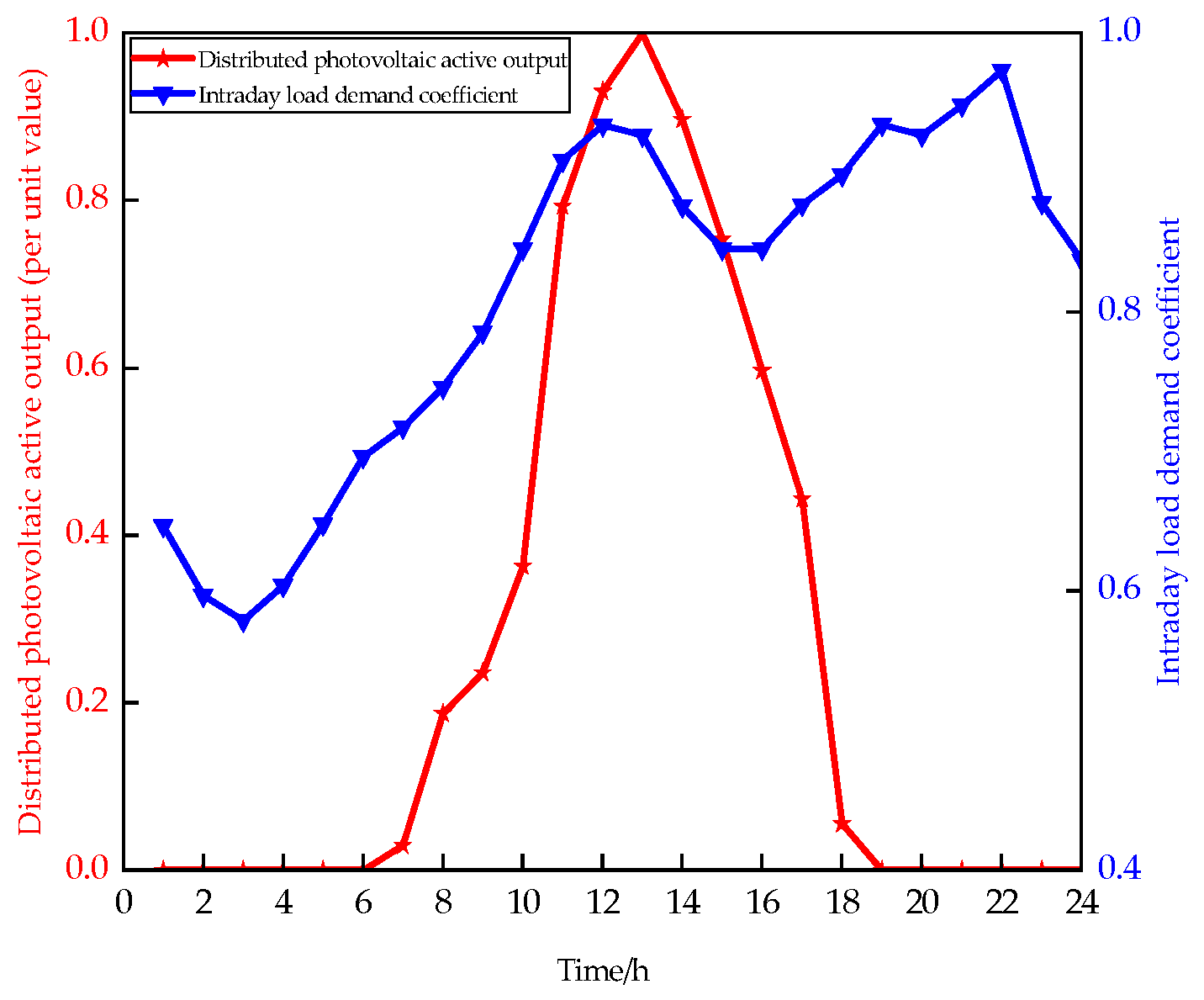


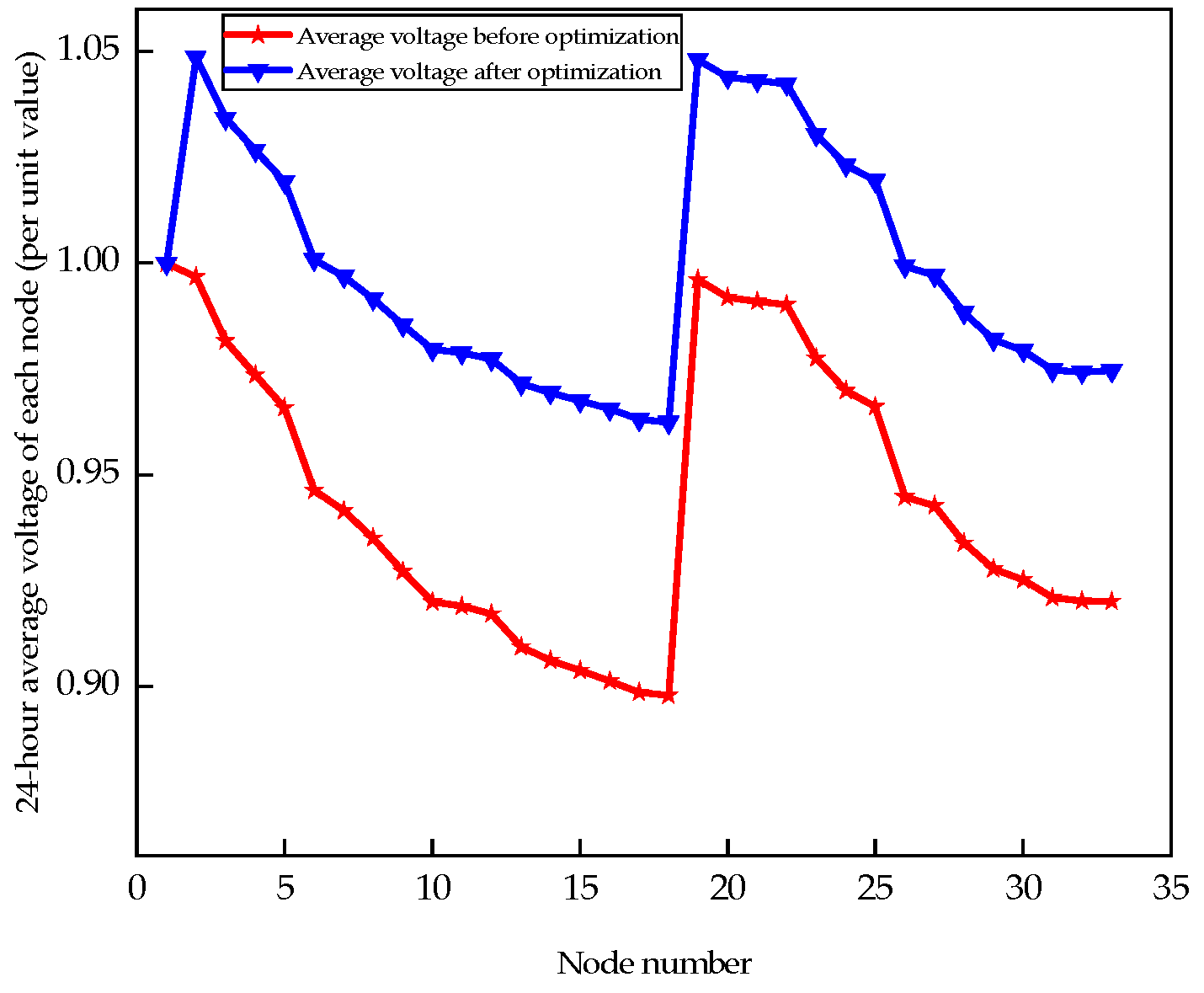
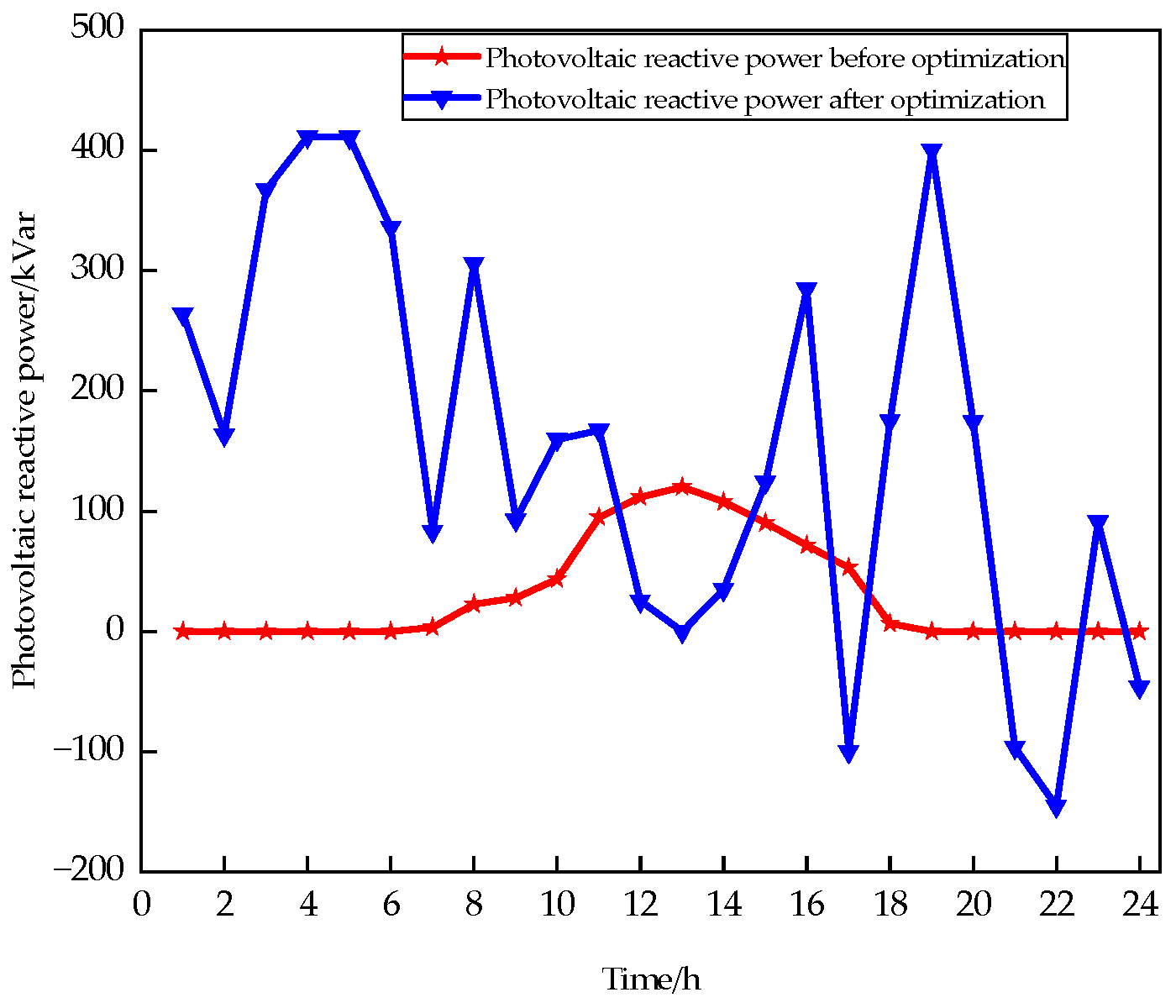
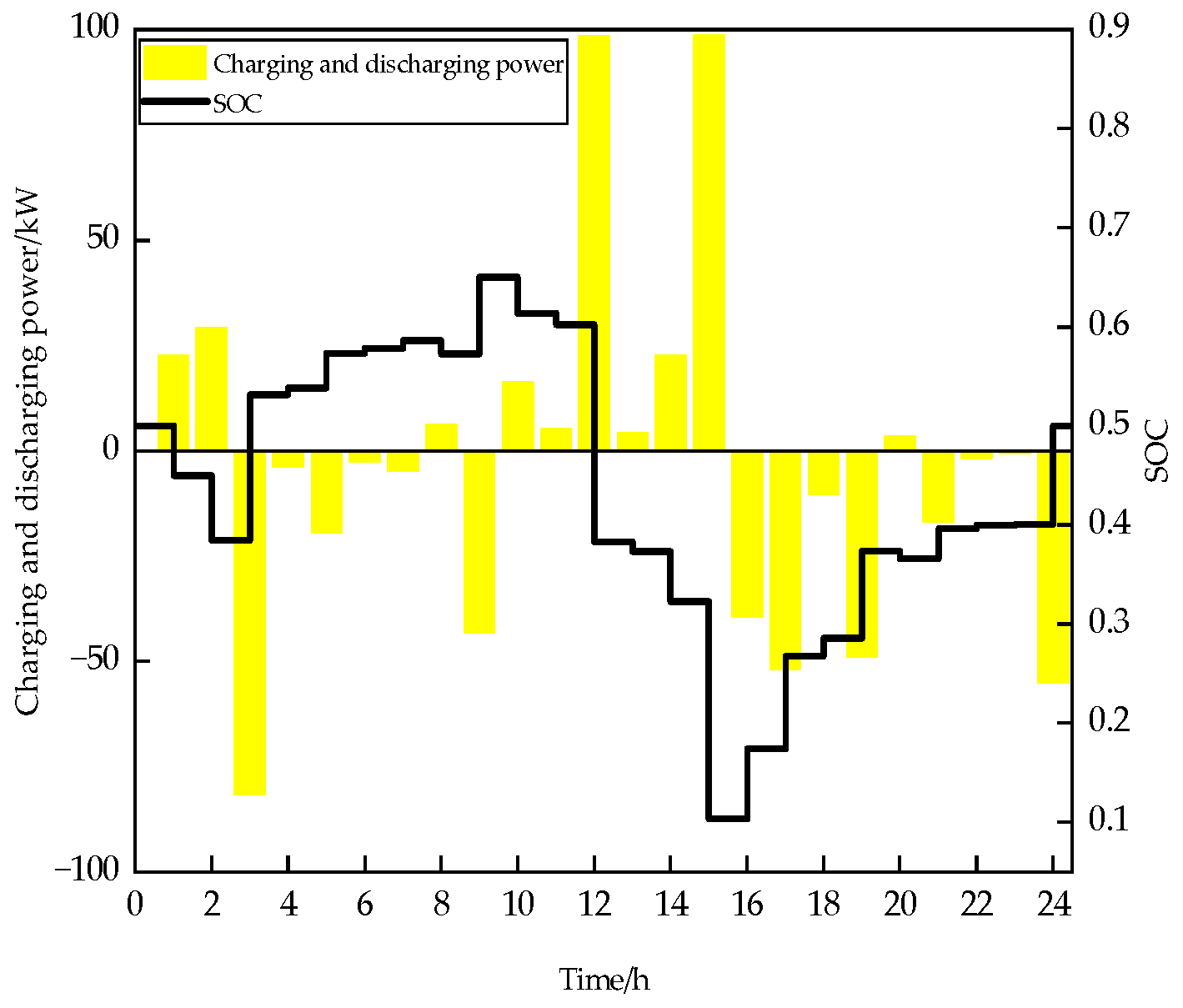

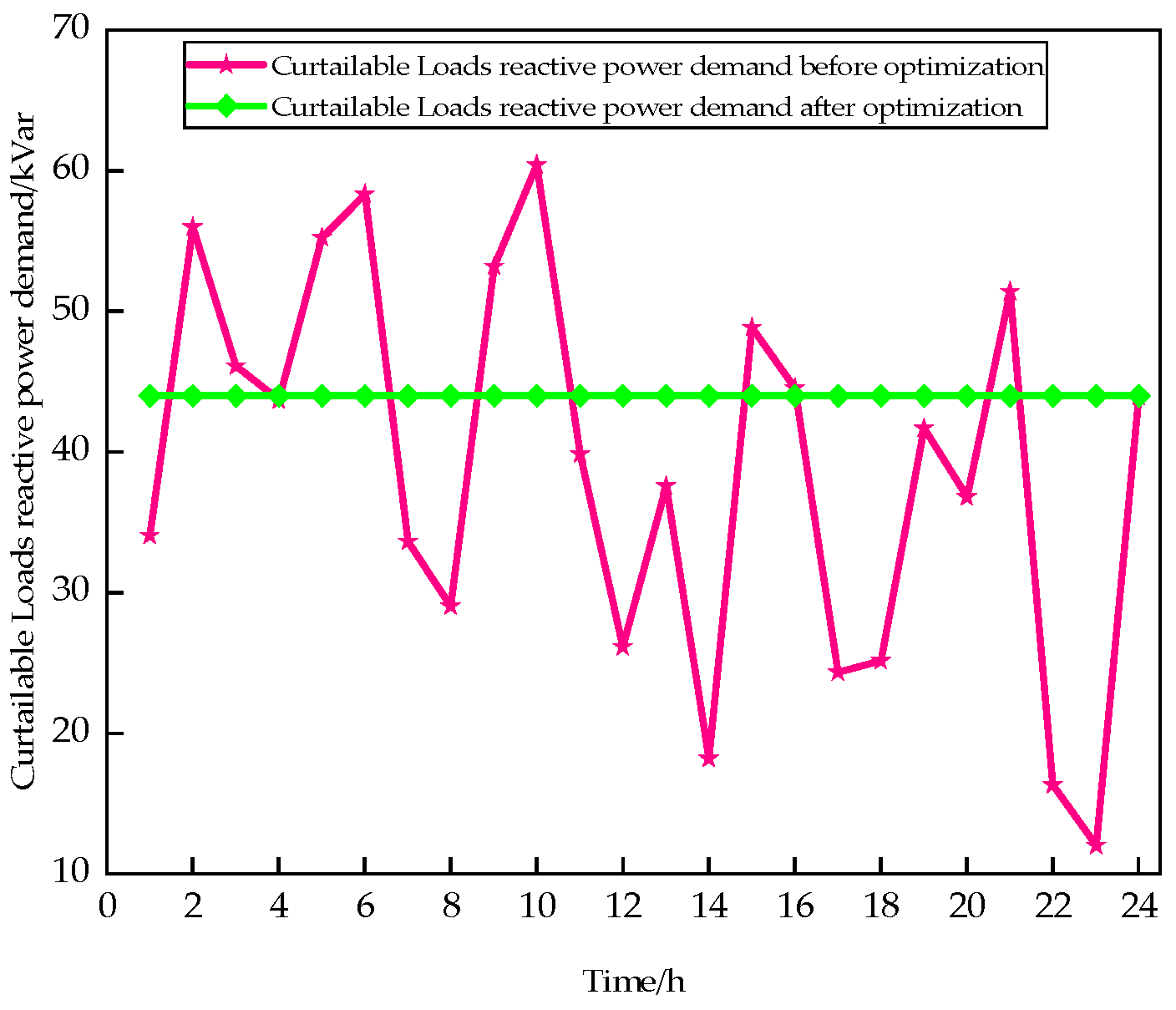
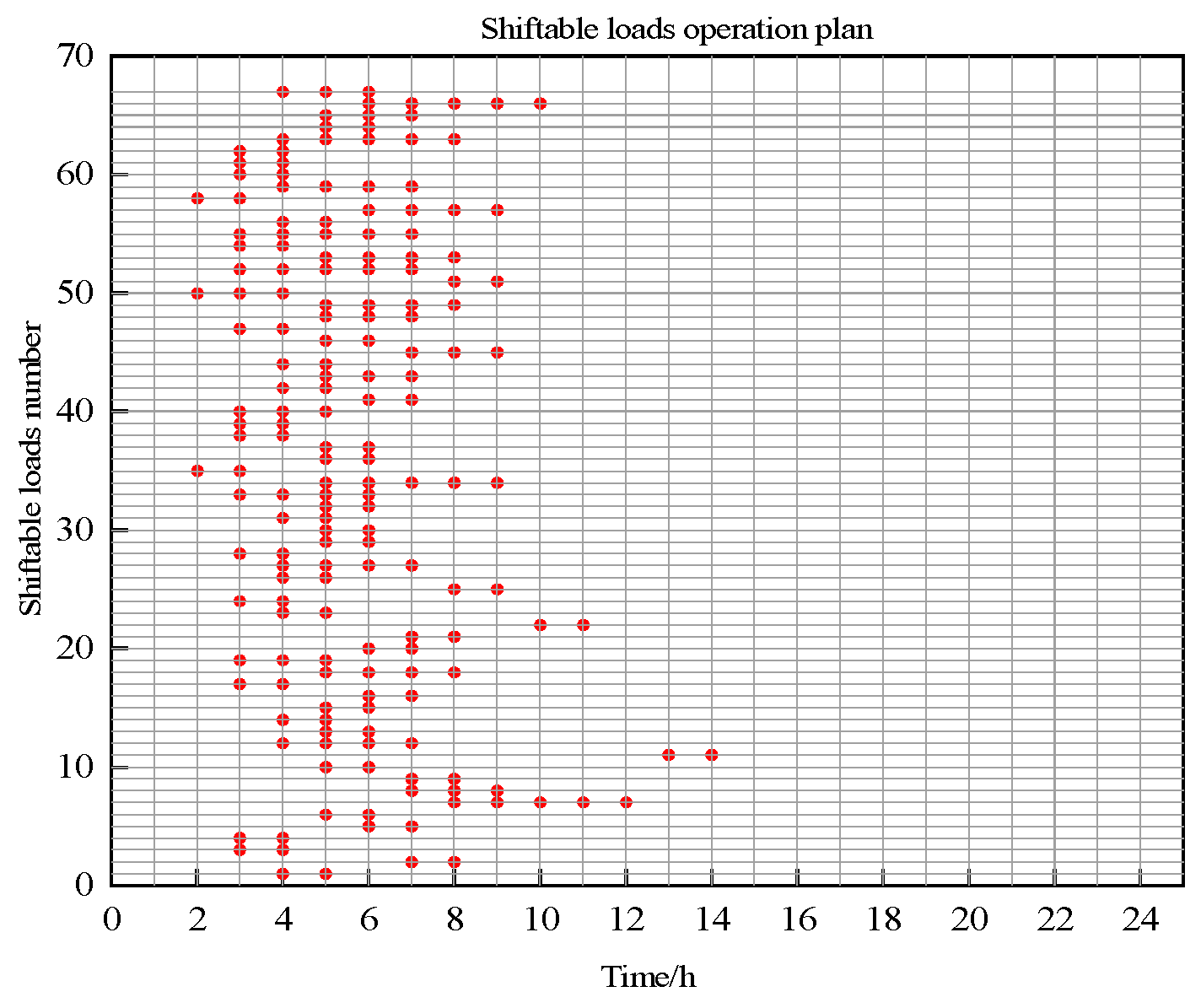


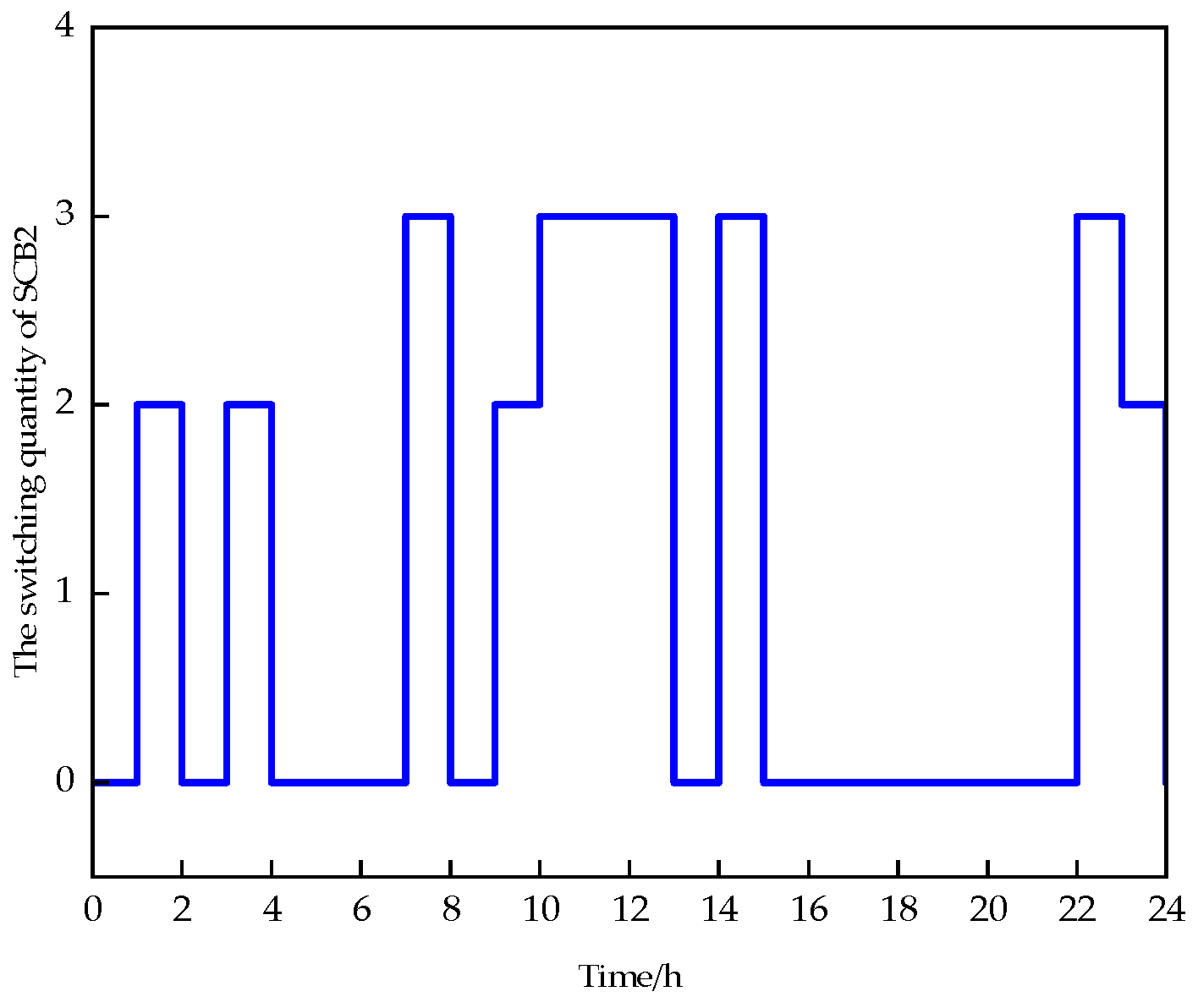


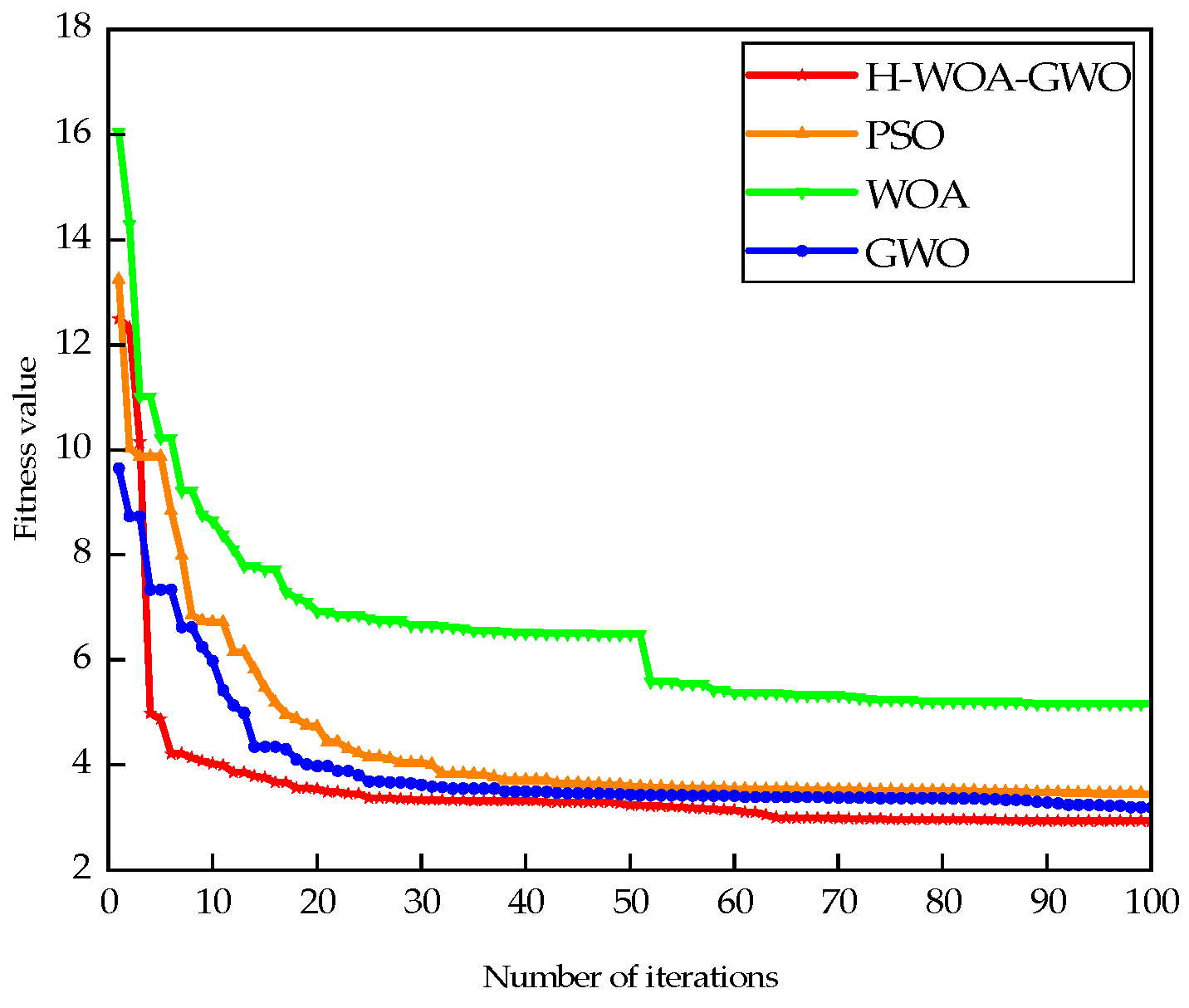
| Line | Sending-End Bus | Terminal Bus | Loadj | Line | Sending-End Bus | Terminal Bus | Loadj |
|---|---|---|---|---|---|---|---|
| 1 | 1 | 2 | 0.012769 | 17 | 17 | 18 | 0.003221 |
| 2 | 2 | 3 | 0.059920 | 18 | 2 | 19 | 0.002519 |
| 3 | 3 | 4 | 0.032175 | 19 | 19 | 20 | 0.016902 |
| 4 | 4 | 5 | 0.032135 | 20 | 20 | 21 | 0.003455 |
| 5 | 5 | 6 | 0.078774 | 21 | 21 | 22 | 0.003176 |
| 6 | 6 | 7 | 0.020878 | 22 | 3 | 23 | 0.016421 |
| 7 | 7 | 8 | 0.027288 | 23 | 23 | 24 | 0.031080 |
| 8 | 8 | 9 | 0.033033 | 24 | 24 | 25 | 0.015671 |
| 9 | 9 | 10 | 0.030902 | 25 | 6 | 26 | 0.006813 |
| 10 | 10 | 11 | 0.004488 | 26 | 26 | 27 | 0.008894 |
| 11 | 11 | 12 | 0.007929 | 27 | 27 | 28 | 0.036931 |
| 12 | 12 | 13 | 0.034187 | 28 | 28 | 29 | 0.026018 |
| 13 | 13 | 14 | 0.013688 | 29 | 29 | 30 | 0.011357 |
| 14 | 14 | 15 | 0.010880 | 30 | 30 | 31 | 0.018046 |
| 15 | 15 | 16 | 0.010922 | 31 | 31 | 32 | 0.003734 |
| 16 | 16 | 17 | 0.011822 | 32 | 32 | 33 | 0.000297 |
| Optimization Objective | Before Collaborative Interaction | After Collaborative Interaction |
|---|---|---|
| Network loss | 5.8216 | 5.0315 |
| Voltage deviation | 44.1509 | 20.6276 |
| Static voltage stability index | 1.8906 | 1.7060 |
| Punishment function | 6.3616 | 0 |
Disclaimer/Publisher’s Note: The statements, opinions and data contained in all publications are solely those of the individual author(s) and contributor(s) and not of MDPI and/or the editor(s). MDPI and/or the editor(s) disclaim responsibility for any injury to people or property resulting from any ideas, methods, instructions or products referred to in the content. |
© 2025 by the authors. Licensee MDPI, Basel, Switzerland. This article is an open access article distributed under the terms and conditions of the Creative Commons Attribution (CC BY) license (https://creativecommons.org/licenses/by/4.0/).
Share and Cite
Li, S.; Chen, T.; Ding, R. Active Distribution Network Source–Network–Load–Storage Collaborative Interaction Considering Multiple Flexible and Controllable Resources. Information 2025, 16, 325. https://doi.org/10.3390/info16040325
Li S, Chen T, Ding R. Active Distribution Network Source–Network–Load–Storage Collaborative Interaction Considering Multiple Flexible and Controllable Resources. Information. 2025; 16(4):325. https://doi.org/10.3390/info16040325
Chicago/Turabian StyleLi, Sheng, Tianyu Chen, and Rui Ding. 2025. "Active Distribution Network Source–Network–Load–Storage Collaborative Interaction Considering Multiple Flexible and Controllable Resources" Information 16, no. 4: 325. https://doi.org/10.3390/info16040325
APA StyleLi, S., Chen, T., & Ding, R. (2025). Active Distribution Network Source–Network–Load–Storage Collaborative Interaction Considering Multiple Flexible and Controllable Resources. Information, 16(4), 325. https://doi.org/10.3390/info16040325






